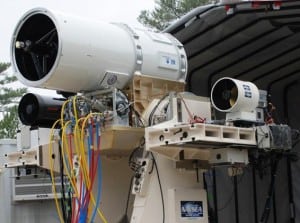
Schafer Corp., a recognized leader in directed energy going back to 1972, is making a strategic move to take technology out of the lab and apply it to developing systems that can be fielded, a company official said. “There’s a big shift, starting this year, so instead of playing as a company on the technical side, we’ll be more a part of developing systems,” said Jim Faist, vice president of Schafer's Military Aerospace division. “We’re moving into an area of…













